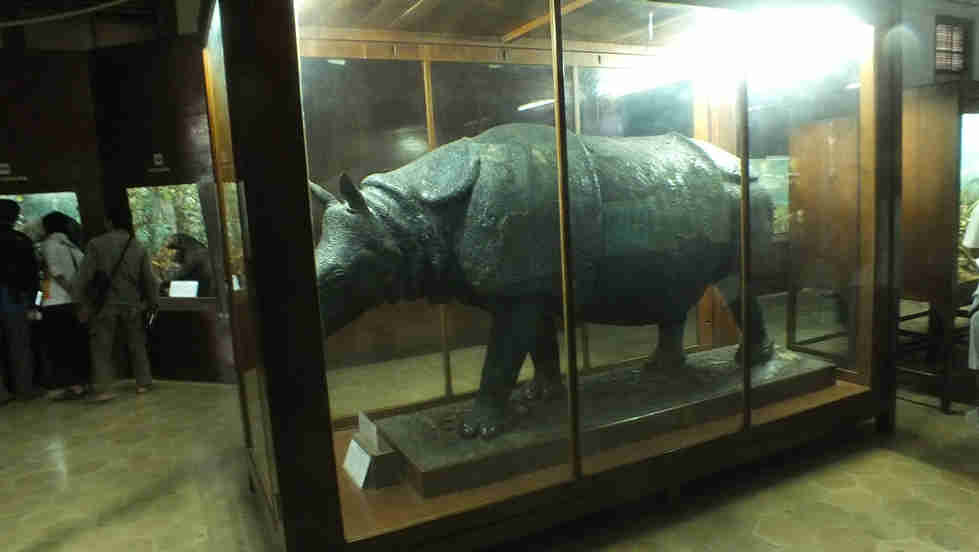
Bogor Zoology Museum – Among many other places, perhaps Bogor Zoology Museum should be on the list that must not be overlooked to see. This place contains plenty of stories.
It’s not only about preserved species from all islands in Indonesia but also the building itself. The building represents 120 years long history.
That’s why now Bogor Zoology Museum has been written on the list of cultural heritages in Bogor.
The history of Bogor Zoology Museum

The set ut of the museum was started in 1894. Named Landbouw Zoologisch Laboratorium, it was never an intention to become a museum. Instead of that, the original intention of the creator was to have a laboratory.
The man behind the establishment of the laboratory was J. C. Koningsberger, a botanist with Germany origin. Later, history wrote his name as the Director of Lands Platentuin, the place now known as Bogor Botanical Gardens in 1910-1918.
The laboratory, small sized one, was to study bugs and destructive pests that endangered the plantation in East Indie. The laboratory started to collect many species from all over places in Indonesia.
Only 4 years after the year of its establishment, the laboratory changed its direction. It took a step forward by starting to make a collection of various animals species. The idea came to Koningsberger after his trip to Srilanka.
During its life, in total the museum changed the name 11 times due to many reasons. The current name, Bogor Zoology Museum is actually not a formal name attached. However people have been accustomed with this name since 1986 more than its actual name on paper.
Another name
By Bogor Citizen who lived in 1980’s, the museum was given a nickname. It was called as “Blao Office/Building”. The nickname referred to the color of the building.
It was and is still blue until today. Blue in Dutch is Blauw but since it sounded like “Blao” then people called it Blao Office.
What can be seen in Bogor Zoology Museum?
 How about “preserved” Bekantan, “preserved” eagles, “preserved” wolves and deer. Yes, all preserved animal species like all museums do.
How about “preserved” Bekantan, “preserved” eagles, “preserved” wolves and deer. Yes, all preserved animal species like all museums do.
The species are coming from various places in Indonesia. From a tiny crab up to a rhinoceros figure in full size. All are put inside glass box. There are also skeletons of various kinds.
The biggest creature can be found here is a blue whale, the gigantic mammal from the sea. Of course, it’s not alive What is shown here only bones. However the bones are arranged following the structure of blue whale anatomy. It is more than 20 Meter length and occupies one hall to exhibit the bones.
In total the Bogor Zoology Museum exhibits more than 2000 specimen for public. The museum which is now under Indonesia Institue of Sciences actually has larger collections. It is said to have collected more than 200,000 specimens.
They place the rest of the collection in another place which is only opened for public once a year.
——-
 Since the location of the Bogor Zoology Museum is attached to Bogor Botanical Gardens, you should not skip this from your plan. If you have entered the Gardens, then you can find the entry door on the Southwest area. Or if you enter the Gardens from its main gate, just turn left and you can see the Blue Building easily.
Since the location of the Bogor Zoology Museum is attached to Bogor Botanical Gardens, you should not skip this from your plan. If you have entered the Gardens, then you can find the entry door on the Southwest area. Or if you enter the Gardens from its main gate, just turn left and you can see the Blue Building easily.
No ticket is required. Once you enter the Gardens, you can see the Museum as well.
It’s open from 08.00 until 17.00.


![[PHOTO] A Street Portraitist on Juanda Street Still Exist](https://lovelybogor.com/wp-content/uploads/2023/09/PHOTO-Street-Portraitist-on-Juanda-Street-Still-Survives-330x220.jpg)

![[PHOTO] How Subsidized LPG (Liquid Petroleum Gas) Distributed in Bogor?](https://lovelybogor.com/wp-content/uploads/2023/09/How-Subsidized-LPG-Distributed-in-Bogor-330x220.jpg)

![[PHOTO] No Longer Just A Town, Bogor is a Metropolis](https://lovelybogor.com/wp-content/uploads/2023/09/No-Longer-Just-Town-Bogor-is-a-Metropolis-330x220.jpg)

![[Photo] The East Side, The Old Parts of Bogor Commuter Train Station](https://lovelybogor.com/wp-content/uploads/2022/09/The-old-part-of-Bogor-Commuter-Train-StationIMG_4233-330x220.jpg)
![[Photos] Old Machine Guns From Indonesian Independence Era – Bogor Perjuangan Museum](https://lovelybogor.com/wp-content/uploads/2022/09/Old-Machine-Guns-From-Indonesian-Independence-Era-Bogor-Perjuangan-Museum-3-330x220.jpg)
![[Photos] Two Landmarks of Bogor City – Kujang Monument and The Nine Gates](https://lovelybogor.com/wp-content/uploads/2022/09/Photo-Two-Landmarks-of-Bogor-City-Kujang-Monument-The-Nine-Gates-330x220.jpg)